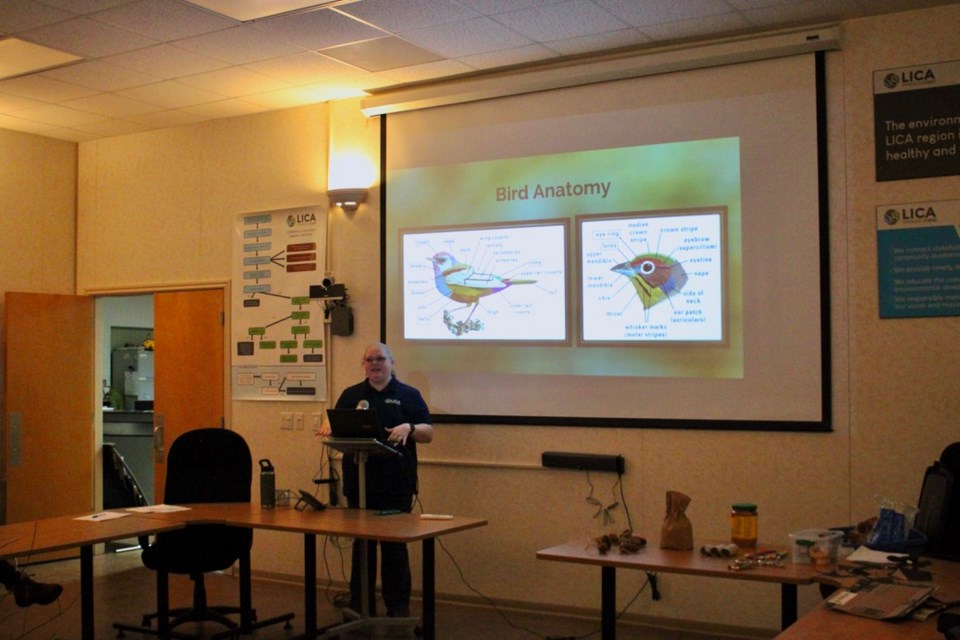BONNYVILLE – LICA offered the community a free presentation about birds with basic identification strategies that can kickstart birdwatching.
The workshop was held in support of LICA’s Citizen-Science Winter Wildlife Monitoring Program, which lets locals help gather supportive data to aid in continued wildlife management and conservation.
The event was open to the community and took place on Nov. 22 at the LICA headquarters in Bonnyville.
Stephanie Sampson, education and outreach coordinator at LICA, kicked off the presentation by explaining the optics involved in binoculars and scopes, and spoke about LICA’s bird watching kit rentals. For those wanting to try out birdwatching without the commitment of buying the equipment, LICA takes a refundable fee to rent out a backpack filled with everything needed to get started, such as binoculars and an identification manual.
“One of the things you’ll want to take note of is that for field guides in Alberta . . . You don't just want the Western guides; Eastern guides will do just as well for you because a lot of those bird species actually do end up flying over our area . . . We have about four different major flyways that kind of congregate all over the top of Saskatchewan and Alberta,” says Sampson.
She encourages the use of online field guides like the app Merlin, that Sampson uses frequently and is a free tool to begin a birdwatching journey.
“I always get these pictures from friends that are of a tiny little brown blob from a couple 100 meters away, and they're like, ‘What bird is this?’ And I will say, I’ve been pretty successful using Merlin for this,” says Sampson.
Sampson’s presentation continued to dive into a wide range of common bird species in the area, and explained some identification markers such as colouration, flight patterns, habitat, and feeding behaviors.
The bird calls that Sampson shared throughout the presentation were provided by avid bird watchers Barb and Jim Beck who are a couple from northern Alberta that have compiled a large amount of audio from birds specific to this area. Sampson says having bird call clips specific to the area can help with identification due to birds having unique dialects.
“Birds have dialects like we do. [For instance,] someone from Boston, they have an accent that differs from someone in Georgia. Our birds also have different dialects. So, a bird in northern Alberta is going to sound different than the bird in eastern Canada,” says Sampson.
She feels that a lot of people do not realize how spectacular birdwatching is in Bonnyville, and noted there are nearly 400 different species that can be seen.
For those wanting to attract birds to their property, Sampson says the first thing to understand is that feeders should be sanitized to prevent the risk of disease and fungal growth in the food.
After that, understanding that different food sources attract a different range of birds will help entice the types of birds you want to see. Sampson encourages people to explore different types of perching options preferred by certain species. For example, Sampson explains that some birds do not like to perch in open spaces, while some like a flat surface to eat from.
The presentation covered an array of topics including the differences between ravens and crows, biomagnification, the endangered species act, and many tips on how to get started as a birdwatcher.
At the end of the presentation, attendees were invited to make a birdfeeder craft out of pinecones, and the event offered plenty of opportunities to ask questions and mingle with fellow wildlife enthusiasts.



